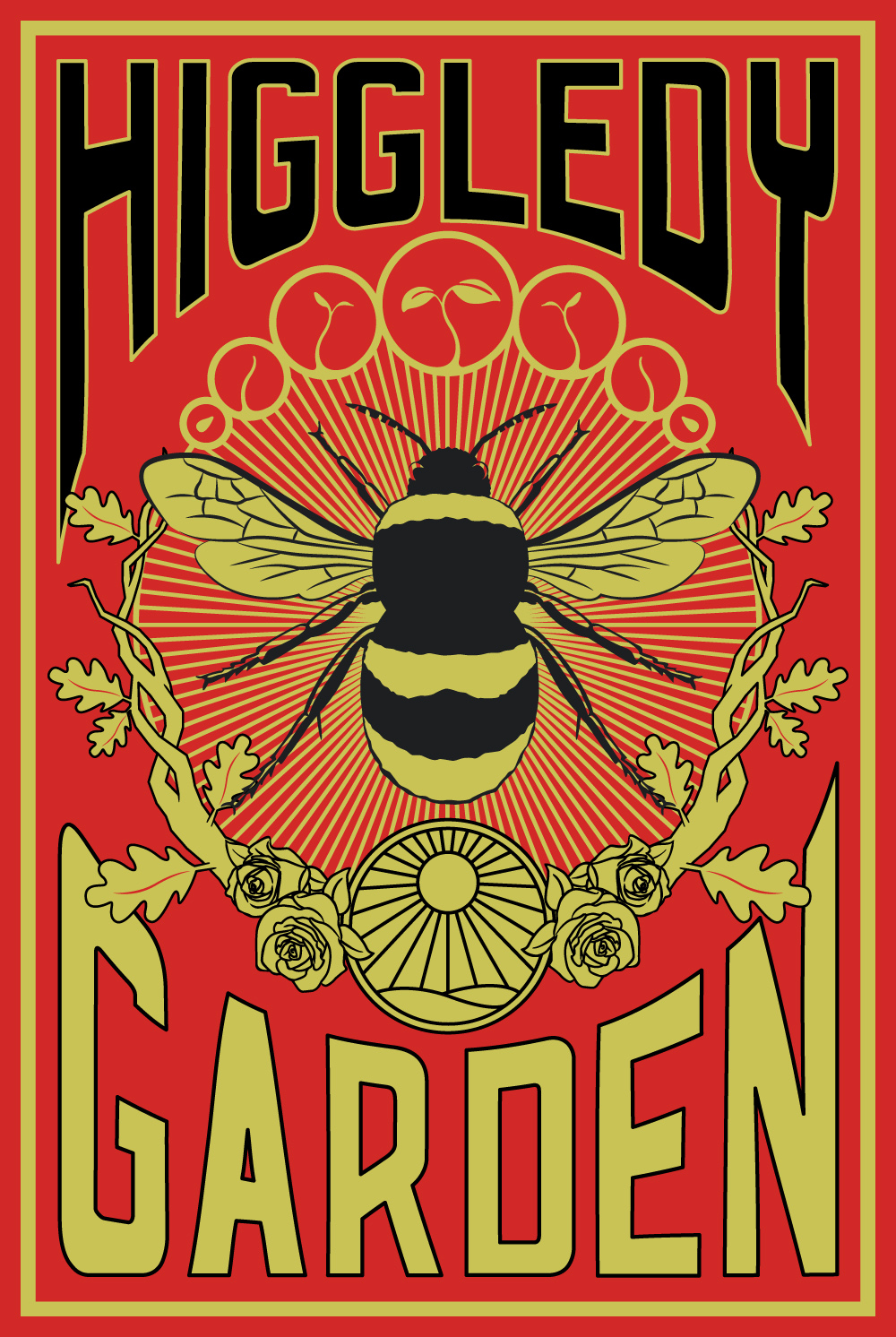Its May, the most heavenly of months, especially if the weather is kind. The cutting garden is really getting into its stride now, there is so much promise ahead with the sweet peas climbing up their supports, the autumn sown annuals are just starting to flower or budding up and the spring sown annuals slowly getting their roots down or waiting patiently to be planted out once the risk of frosts has passed. You might be thinking that’s it for seed sowing for a while but don’t be too hasty, there are some flowers that I encourage you to think about for sowing soon. If you are relying on spring sown annuals for cutting you probably have a bit of a gap now while you wait for them to germinate, pot on and plant in your garden or cutting patch. But there are one group of flowers that come in to their own now and that is the biennials. They are the stars of the moment and start flowering in April with the Wallflowers and Honesty, May you have Hesperis and into June you have the spires of Foxgloves and Canterbury bells and the vibrant Sweet William. They flower with abundance and some act as great fillers in your bouquets like the Wallflowers, Hesperis and Honesty and others can be stars in their own right, like the Foxgloves, Sweet William and Canterbury Bells.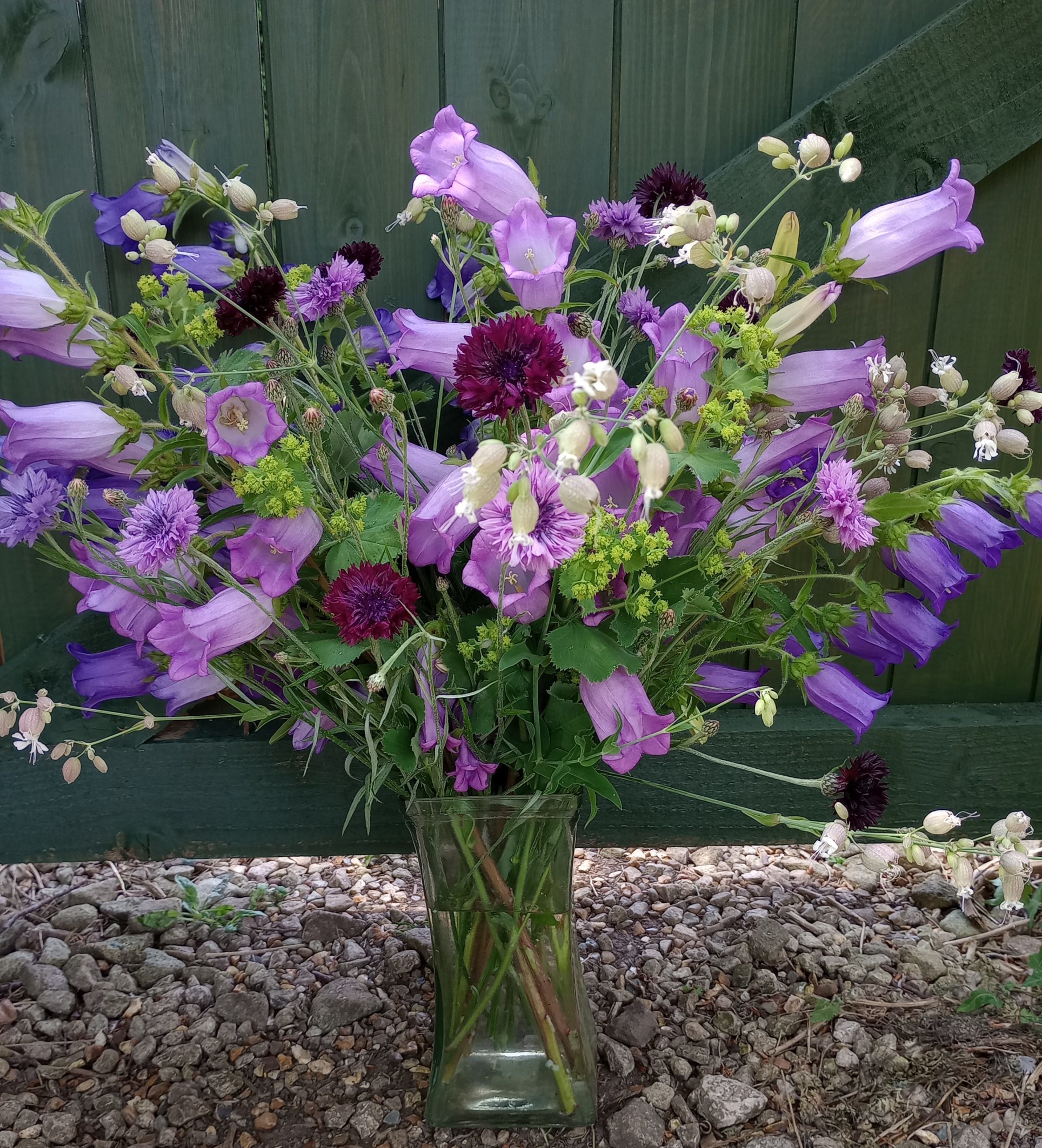 But first lets just have a brief explanation of what a biennial is. Biennials are flowers that you sow in late Spring/early Summer, they germinate and grow into a small plant in the first year and then flower the following year. That might seem like a long time to wait but gardening is all about patience and planning, aren’t we always thinking ahead to the next season, what will be blooming, what jobs we have to do next. Its a joyful cycle of the seasons and biennials have the potential of adding so much flower and life to your garden or cutting patch. Even if you don’t want to grow them for cutting they are all great for the pollinators in your garden. Just think about Foxgloves, bumble bees adore them. And I haven’t even mentioned the scent! Oh joy, that gentle honey-like scent of the Wallflowers, the slightly stronger but still not overpowering scent of Hesperis (or Sweet Rocket as its otherwise known) and Honesty, then finally Sweet William with its spicy tones, a bit clove-like. Surely I’m convincing you now.
But first lets just have a brief explanation of what a biennial is. Biennials are flowers that you sow in late Spring/early Summer, they germinate and grow into a small plant in the first year and then flower the following year. That might seem like a long time to wait but gardening is all about patience and planning, aren’t we always thinking ahead to the next season, what will be blooming, what jobs we have to do next. Its a joyful cycle of the seasons and biennials have the potential of adding so much flower and life to your garden or cutting patch. Even if you don’t want to grow them for cutting they are all great for the pollinators in your garden. Just think about Foxgloves, bumble bees adore them. And I haven’t even mentioned the scent! Oh joy, that gentle honey-like scent of the Wallflowers, the slightly stronger but still not overpowering scent of Hesperis (or Sweet Rocket as its otherwise known) and Honesty, then finally Sweet William with its spicy tones, a bit clove-like. Surely I’m convincing you now. So what goodies can we tempt you with, well lets go through them, starting with the first into flower, the Wallflowers, we have four different varieties (Wallflower ‘Cloth of Gold’, ‘Ivory White’, ‘Ruby Gem’ and ‘Vulcan’). Seen all together here!
So what goodies can we tempt you with, well lets go through them, starting with the first into flower, the Wallflowers, we have four different varieties (Wallflower ‘Cloth of Gold’, ‘Ivory White’, ‘Ruby Gem’ and ‘Vulcan’). Seen all together here!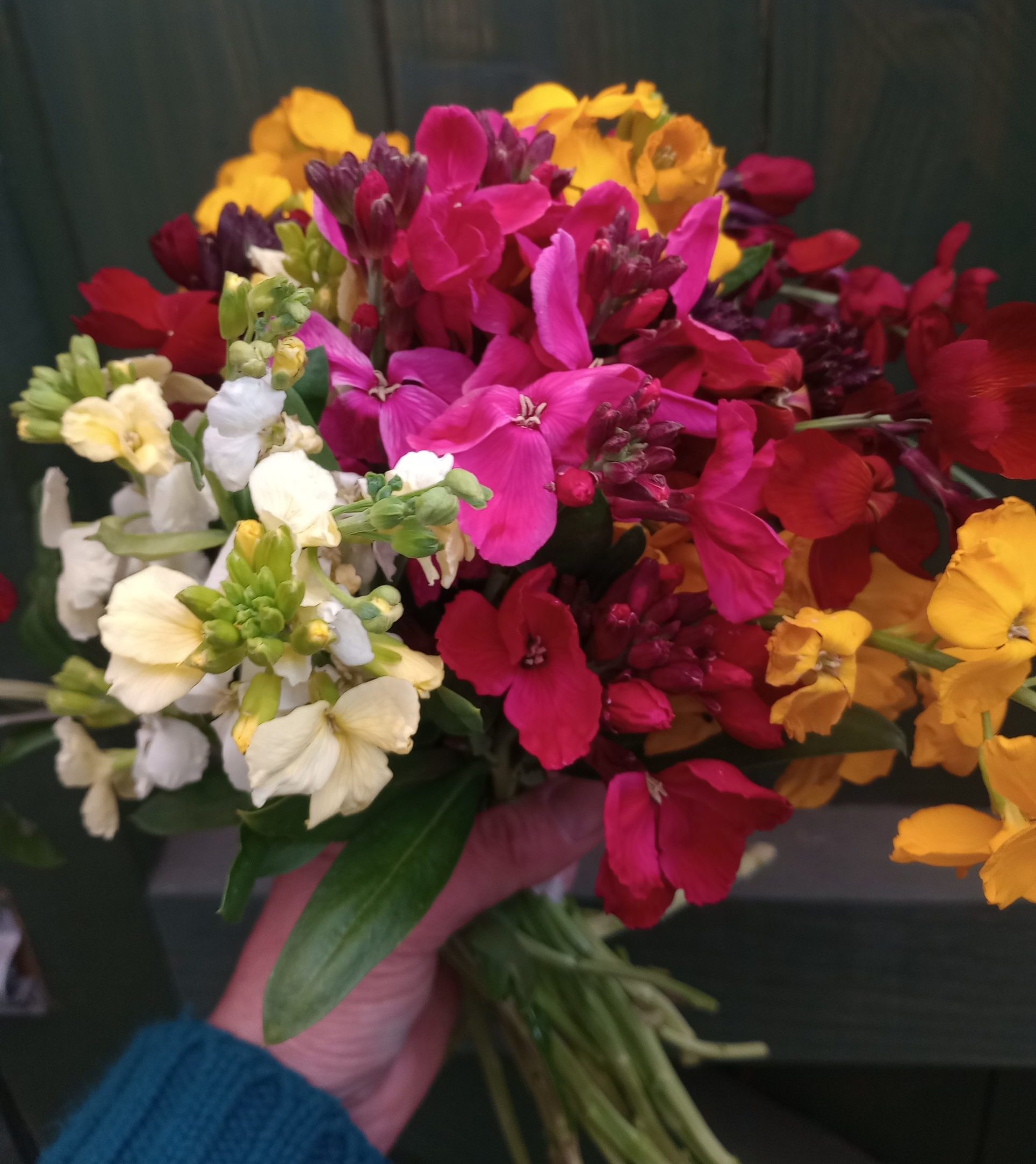 They all have a lovely gentle sweet scent that I adore and this adds a great dimension to your arrangements. I love them all, but just a warning ‘Ivory White’ isn’t white or if it is it should be called Buttermilk white, the buds start off butter yellow and then fade to a rich cream as the flowers open. It goes nicely with the richer egg-yolk yellow of ‘Cloth of Gold’ and both go beautifully with the blues of bluebells, Forget-me-nots, or purples of Honesty. You will know if you follow me on Instagram that I’m a big fan of pale blue and lemon yellow combination in the spring time. Here we have the yellow wallflowers with Forget-me-nots, Bluebells and Narcissus.
They all have a lovely gentle sweet scent that I adore and this adds a great dimension to your arrangements. I love them all, but just a warning ‘Ivory White’ isn’t white or if it is it should be called Buttermilk white, the buds start off butter yellow and then fade to a rich cream as the flowers open. It goes nicely with the richer egg-yolk yellow of ‘Cloth of Gold’ and both go beautifully with the blues of bluebells, Forget-me-nots, or purples of Honesty. You will know if you follow me on Instagram that I’m a big fan of pale blue and lemon yellow combination in the spring time. Here we have the yellow wallflowers with Forget-me-nots, Bluebells and Narcissus.

 But Wallflowers also enable lovely rich dark combinations using Wallflower ‘Vulcan’. Here it is with cherry blossom, dark red Hellebores, white Cytisus and Narcissus.
But Wallflowers also enable lovely rich dark combinations using Wallflower ‘Vulcan’. Here it is with cherry blossom, dark red Hellebores, white Cytisus and Narcissus.
 Wallflower ‘Ruby Gem’ was new to me this year and I love its vibrant pink.
Wallflower ‘Ruby Gem’ was new to me this year and I love its vibrant pink.


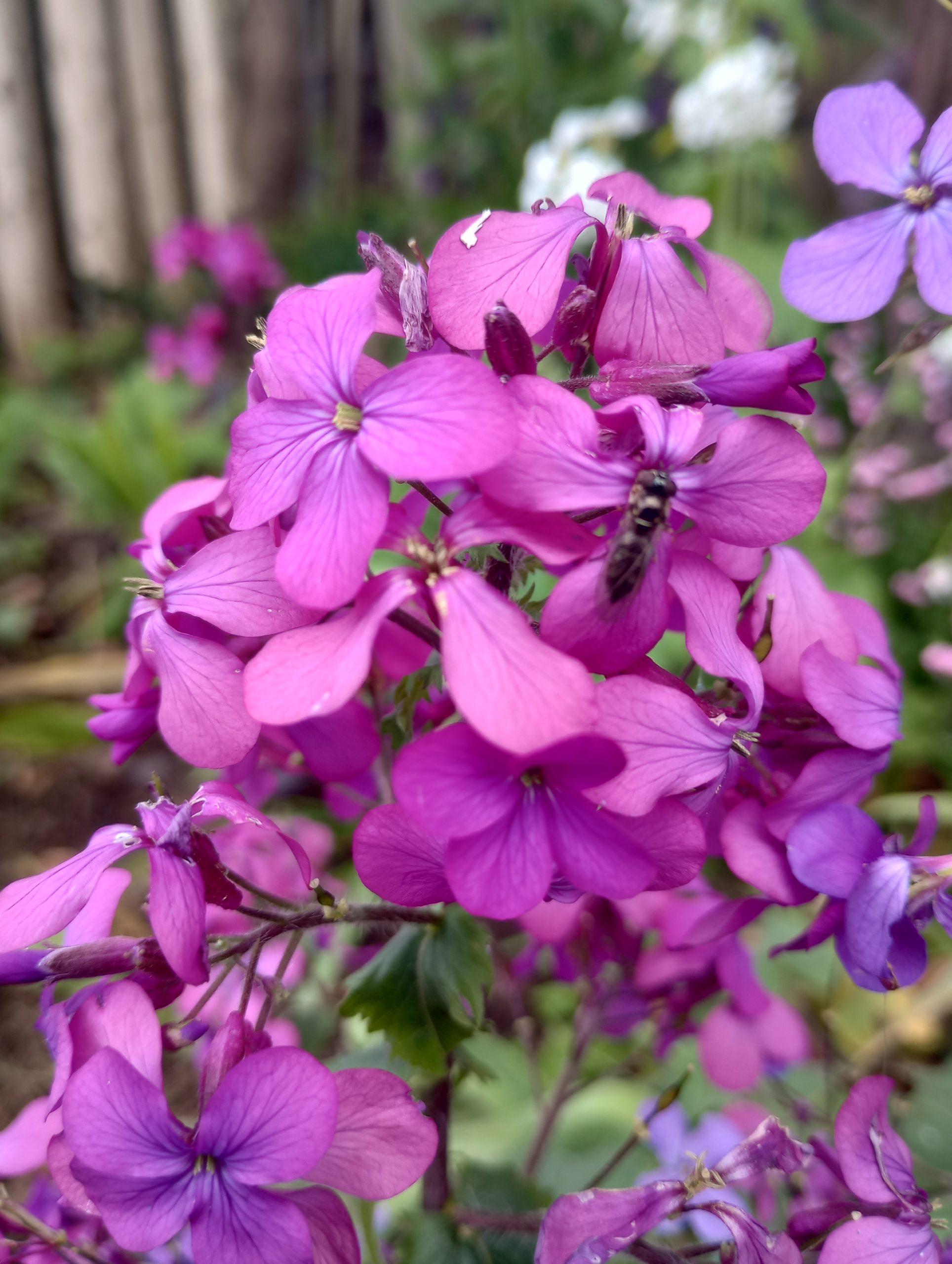


Into June you get the glorious spires of Foxgloves. Here is Digitalis ‘Excelsior’ and Digitalis ‘Apricot’ in my garden a few years ago. 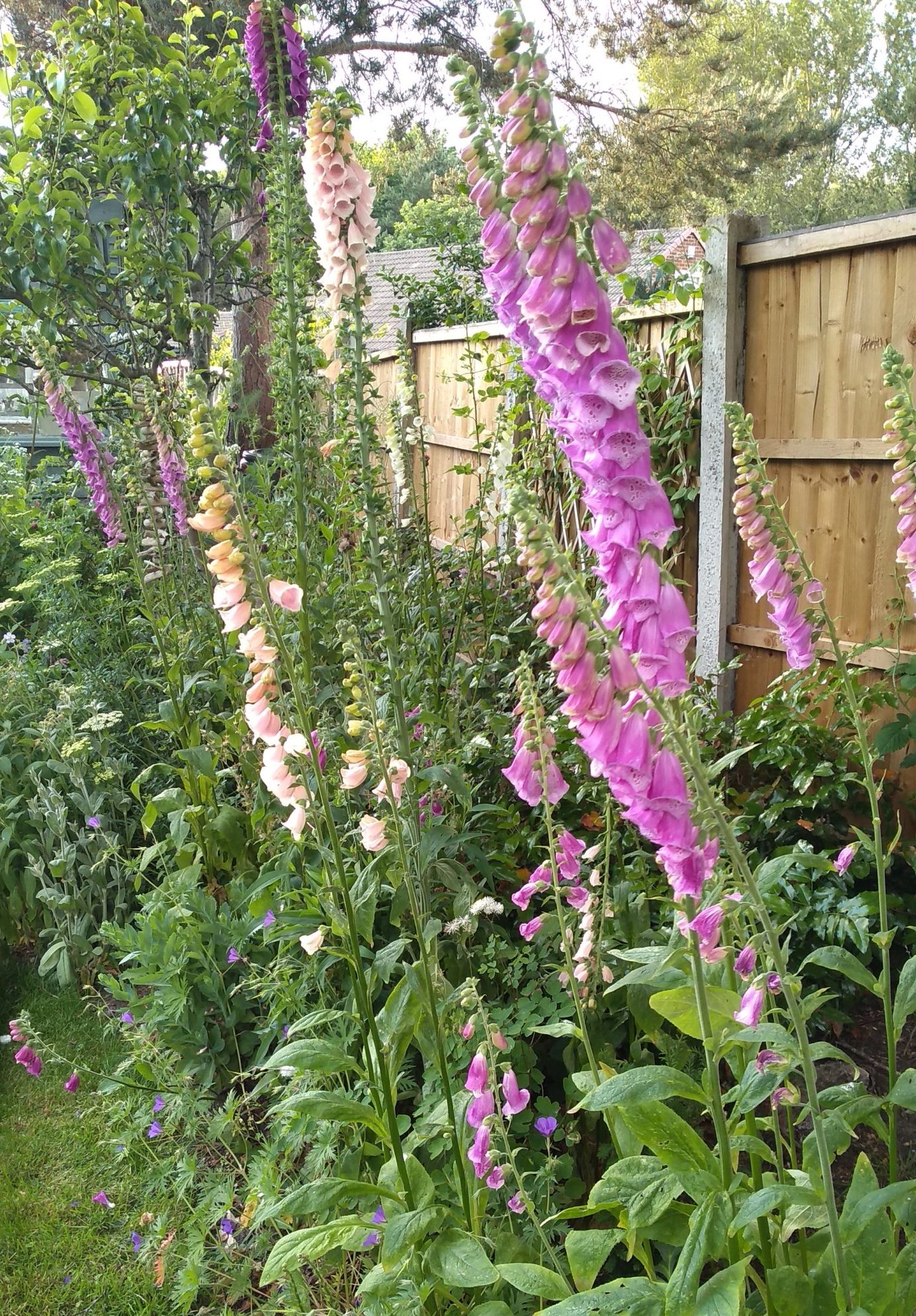

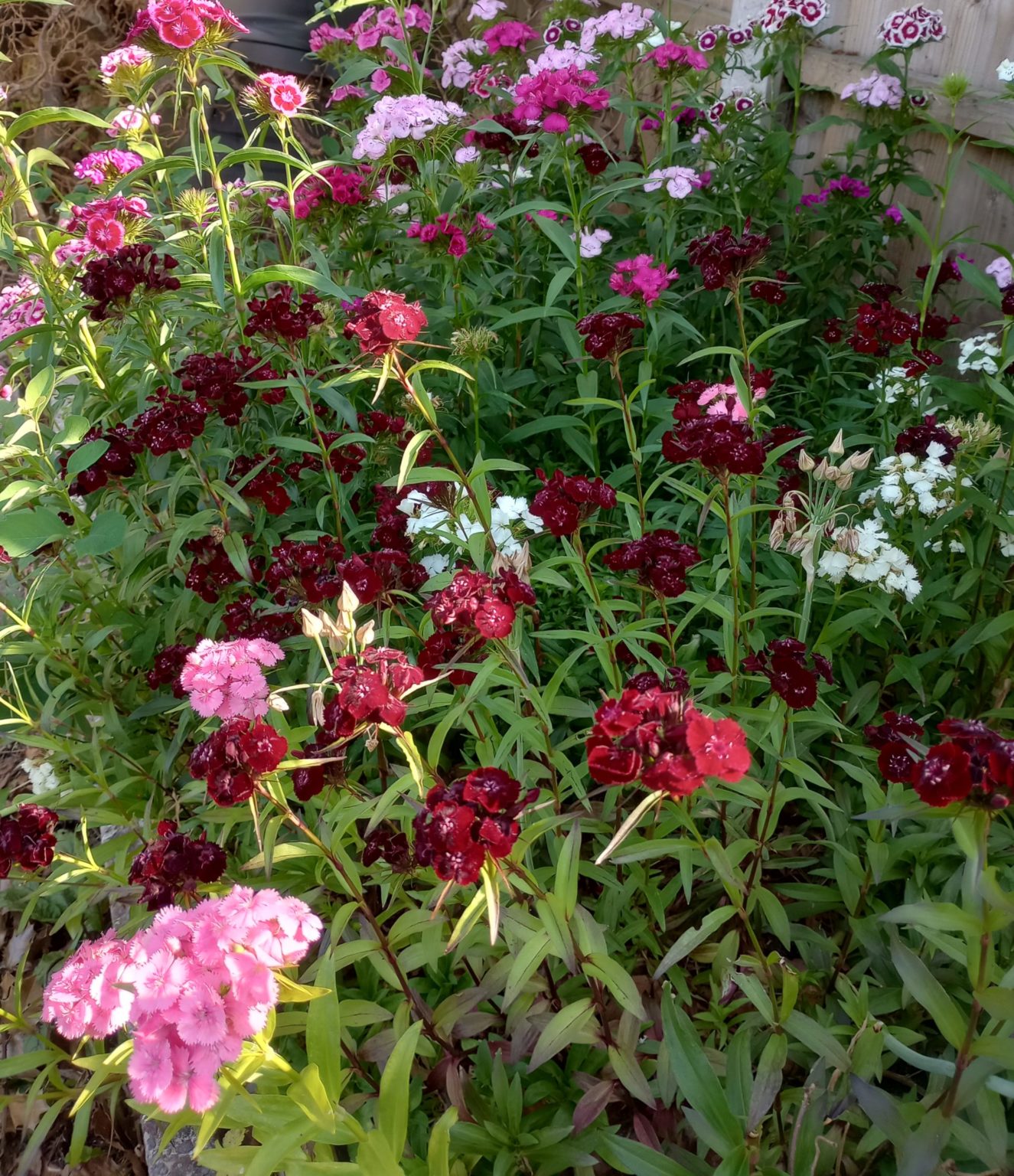



So hopefully I’ve convinced you to give them a go, but how to sow them. There is detailed sowing information for each variety in the Higgledy garden seed sowing guide but here are just a few hints and tips. Sowing direct into a spare patch of ground or a nursery bed is the ideal option, then you don’t have to use pots and compost. Prepare the bed by clearing any weeds and raking over so that the soil is nice and crumbly. Then you can either broadcast sow over an area or sow thinly in rows. The advantage of sowing in rows is you can spot any weed seeds that germinate in between the rows and can confidently remove them. Then thin out if needed and then you can move them to their final growing position in the late summer/early autumn. They will stay as a small plant over winter and then start growing and flower the following spring.
However, if you are anything like me you won’t have any room in your garden to sow direct so I sow into seed trays or 9cm pots. They don’t need protection so don’t need to be in a greenhouse. Wallflowers germinate quickly and need pricking out and potting on speedily as they can get leggy and woody and held back if not. Foxglove seed is tiny so try and sow thinly so they are easier to prick out. Honesty has big seeds so they can be sown into modules and then potted on or straight into 9cm pots. Its crucial to keep them well-watered especially with all the sunshine we are getting at the moment and keep them growing steadily. They need to be planted out in final positions by late summer really so they have time to get a good root system down before any cold weather sets in. Or you can also move them around in the early spring before they get growing again. I often get seedlings now popping up of all biennials in my garden so often move them around in the spring. They are pretty tough plants.
Have I convinced you to give them a go? If so we have a special biennial bundle offer. With 10 varieties at 25% off.
Happy biennial seed sowing
Higgledy Anne
(I’m on Instagram anne_hinks if you fancy a follow, I’ve also joined Bluesky Anne Hinks)
